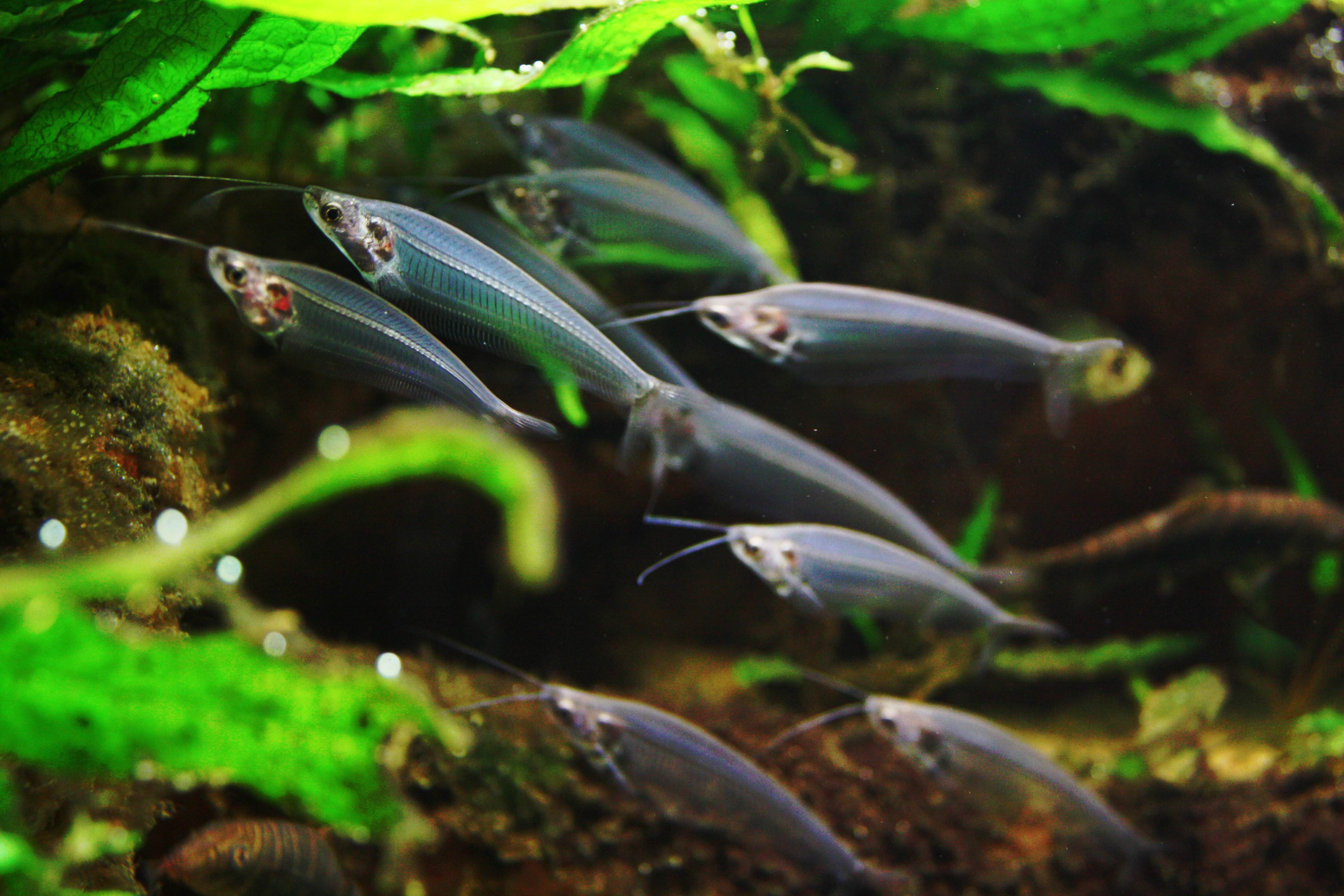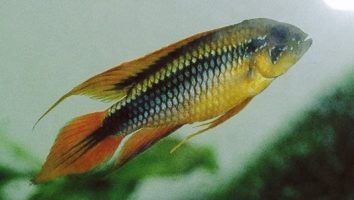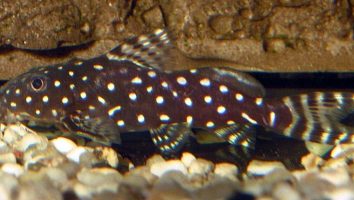Glass Catfish are a beautiful and transparent freshwater fish that make a great addition to any aquarium.
They’re easy to care for and very peaceful, making them a good choice for beginner fishkeepers.
But even though they’re easy to care for, there are still a few things you need to know to make sure your Glass Catfish are happy and healthy.
That’s what this guide is for. We’ll teach you everything you need to know about Glass Catfish care, from diet and tank mates, to breeding and common problems.
Table of contents
Species overview
Glass catfish (Kryptopterus minor) are a type of freshwater fish that are native to Southeast Asia.
They are most commonly found in Thailand, Cambodia, Laos, and Vietnam.
Glass catfish get their name from their extremely clear bodies. In fact, they are almost completely transparent!
This fish is a popular choice for aquariums because of its unique appearance.
Glass catfish are a peaceful fish that do well in community tanks. They are not aggressive and get along with most other fish.
One thing to keep in mind with glass catfish is that they are very sensitive to changes in water conditions. So, it’s important to keep a close eye on your tank and make sure the water quality is always good.
Appearance

The first thing you’ll notice about this fish is that they’re… well, see-through. Glass catfish are a type of freshwater fish that are completely transparent.
This lack of coloration isn’t due to a lack of pigment, but rather a excess of it. The cells in their body are actually stuffed with pigment and this makes them look clear.
If you were to put one of these fish on a white background, you would be able to see their internal organs quite clearly.
Aside from their transparency, glass catfish have a very standard body shape. They’re long and thin with a slightly flattened belly.
Their dorsal fin is tall and thin and begins about two-thirds of the way back on their body. The anal fin is a bit shorter and thinner and starts just behind the dorsal fin.
They have a forked caudal fin that’s slightly taller than the anal fin. The caudal peduncle is very thin.
Glass catfish also have barbels on their chin that they use to help them find food. These barbels are also transparent.
Lifespan
The lifespan of glass catfish is around 5 to 8 years in captivity. These fish are actually pretty long-lived for such small creatures.
As with any fish, there are a number of things that can impact the lifespan of glass catfish. Poor water quality, stress, and a suboptimal diet are all things that can shorten their lifespan.
Size
Glass catfish grow to an average length of 2.5 inches, but they can reach up to 4 inches in length in some cases.
Tank
Tank Size
The minimum recommended tank size for glass catfish is 20 gallons. If you’re looking for a small freshwater fish that can fit in an average-sized tank, this is the fish for you.
Glass catfish prefer to live in groups of 5 or more so you will need to factor that into your tank size as well. We recommend a 20 gallon tank for a school of 5 glass catfish.
Water Parameters
The glass catfish is a delicate creature that requires pristine water conditions. Slight deviations from the parameters below can cause stress, illness, and even death.
This is not a fish for the beginner. It’s best to have a few years of experience under your belt before attempting to care for one.
Here are a few water parameters to keep in mind when caring for a glass catfish.
- Water temperature: 74 to 82 degrees Fahrenheit
- pH levels: 6.5 to 7.5
- Water hardness: 2-10 dGH
- Alkalinity Levels: 3-8 dKH
What To Put In Their Tank
Glass catfish are a very popular freshwater species, and it’s not hard to see why. Their unique see-through bodies are a real treat for the eyes.
When it comes to setting up the inside of their tank you won’t need to worry too much. These fish are very peaceful and don’t require a lot of space to swim around in.
We recommend using a gravel substrate since it’s easy to clean and doesn’t require much maintenance.
As for plants, you can use either real or fake plants. It’s really up to you and what you prefer. Just make sure that the plants you choose are safe for Glass catfish and won’t harm them in any way.
These fish also love to hide, so include some caves or driftwood in their tank. This will give them a place to go when they want to escape the light or hide from potential predators.
Common Diseases
Glass catfish are some of the hardiest freshwater fish out there. They’re very resistant to disease and can tolerate a wide range of water conditions.
However, that doesn’t mean they’re invincible. Just like any other fish, they can still get sick if the water conditions in their tank are poor or if they’re exposed to a sick fish.
The most common disease that affects glass catfish is ich. This is a parasite that can quickly overwhelm your fish if it’s not treated early on.
The most obvious sign of ich is the presence of white spots on the body, fins, and gills of your fish. If you notice this, it’s important to take action immediately.
There are plenty of other potential diseases that can affect glass catfish, but they’re not as common. Some other things to look out for include infections, parasites, and fin rot.
As always, the best way to prevent your fish from getting sick is to maintain clean and stable water conditions in their tank. A well-maintained aquarium is always the key to happy and healthy fish.
Behavior & Temperament
Glass catfish are some of the most peaceful fish you can find. They stick to themselves and don’t bother other tank mates. Even when they’re in a group, they don’t interact much with each other. The only time you’ll see them come together is when they’re feeding.
These fish are timid by nature and will often hide when they feel threatened. It’s not uncommon for them to spend most of the day in hiding spots. When they do come out, they’re usually at night.
Even though they’re not very social, glass catfish do best in groups. They’re much happier and less stressed when they’re around others of their own kind. A group of 5 or more is ideal.
If you’re looking for a low-maintenance fish that won’t bother other tank mates, the glass catfish is a great choice.
Tank Mates
Glass catfish are a peaceful species that do well in community tanks. They’re not too large, so they can be kept with smaller fish.
Because they’re a schooling fish, it’s best to keep them in groups of at least 5. This will help reduce their stress levels and make them feel more comfortable in their environment.
Some compatible glass catfish tank mates include:
- Neon Tetras
- Ghost Shrimp
- Harlequin Rasboras
- Rummy Nose Tetras
- Bloodfin Tetras
- White Cloud Mountain Minnows
- Guppies
- Platies
Breeding
The glass catfish is a fairly easy species to breed in captivity. They are not too picky about their breeding environment as long as it meets their basic needs.
To start, you will need a breeding tank that is at least 10 gallons. The tank should have a tight-fitting lid to prevent the fish from jumping out.
Next, you will need to set up the tank with live plants and a dark substrate. The plants will provide the fry with hiding places and the dark substrate will help to bring out their colors.
Glass catfish prefer to breed in groups, so you will need to add at least six fish to the tank. It is best to add two males for every female.
Once the fish are in the tank, you will need to raise the temperature to 86 degrees Fahrenheit. This will trigger spawning.
The female glass catfish will lay her eggs on the plants in the tank. After she lays the eggs, the male will fertilize them.
The eggs will hatch in about 48 hours. Once they hatch, the fry will be free-swimming. They will eat microscopic organisms in the water.
As they grow, you can start to feed them baby brine shrimp and crushed flake food.
Conclusion
Glass catfish care is actually pretty easy once you understand their needs.
They’re a bit more delicate than other fish, but as long as you take care of them they will thrive in your tank.
They’re a beautiful addition to any freshwater tank and will surely impress your friends and family with their unique look.
Overall, we think glass catfish are a great option for anyone looking for a new and exciting fish to add to their tank!












